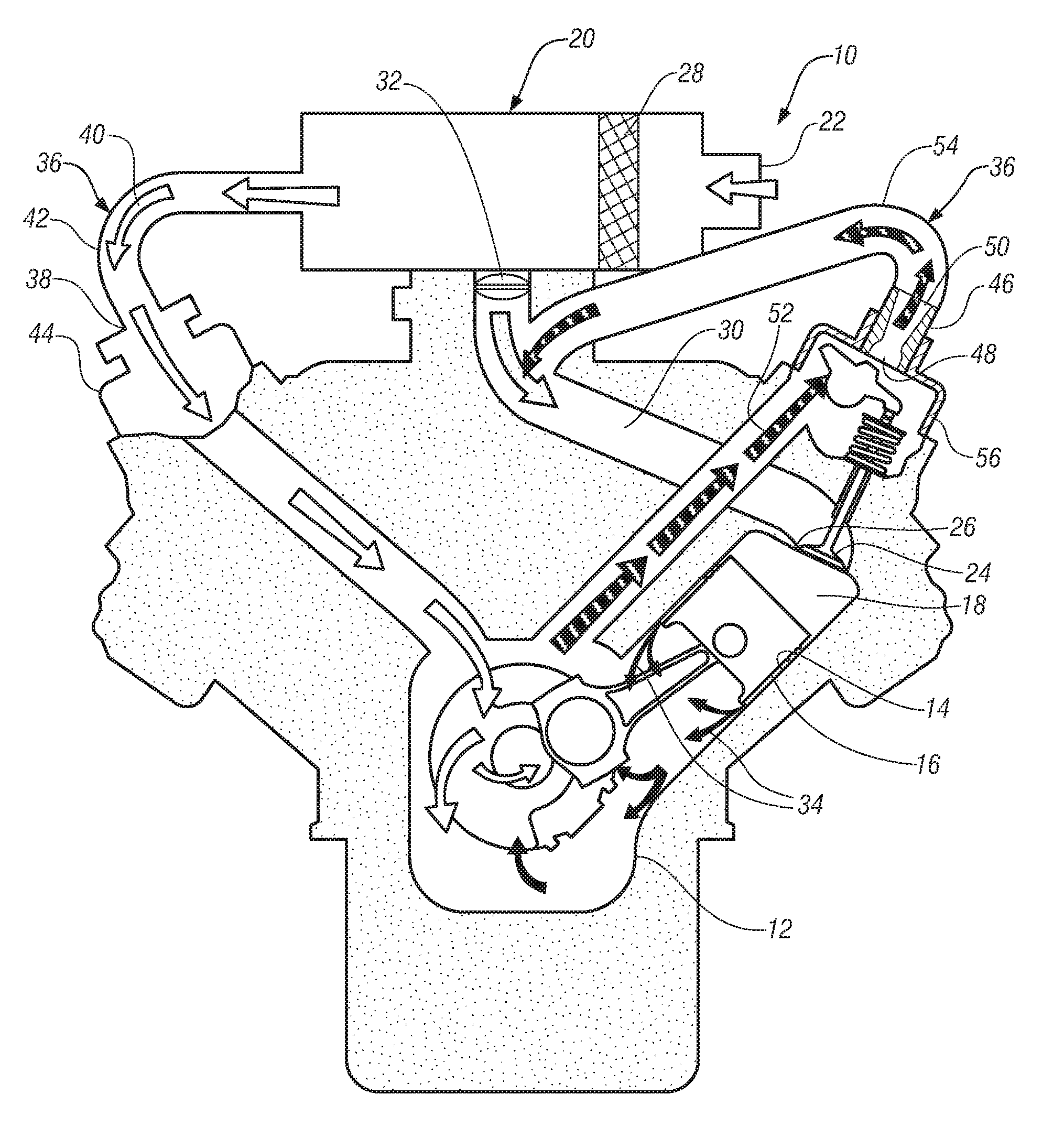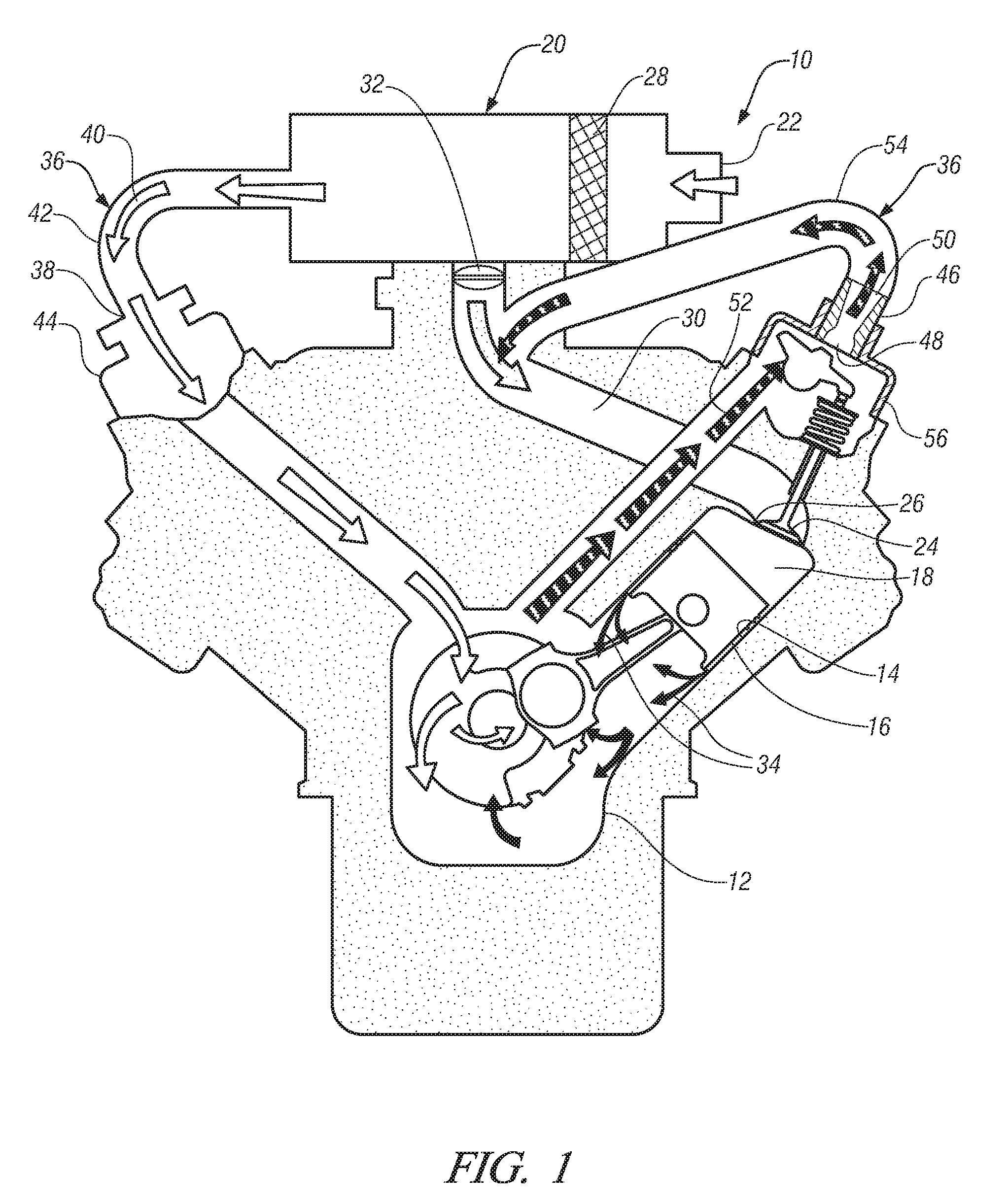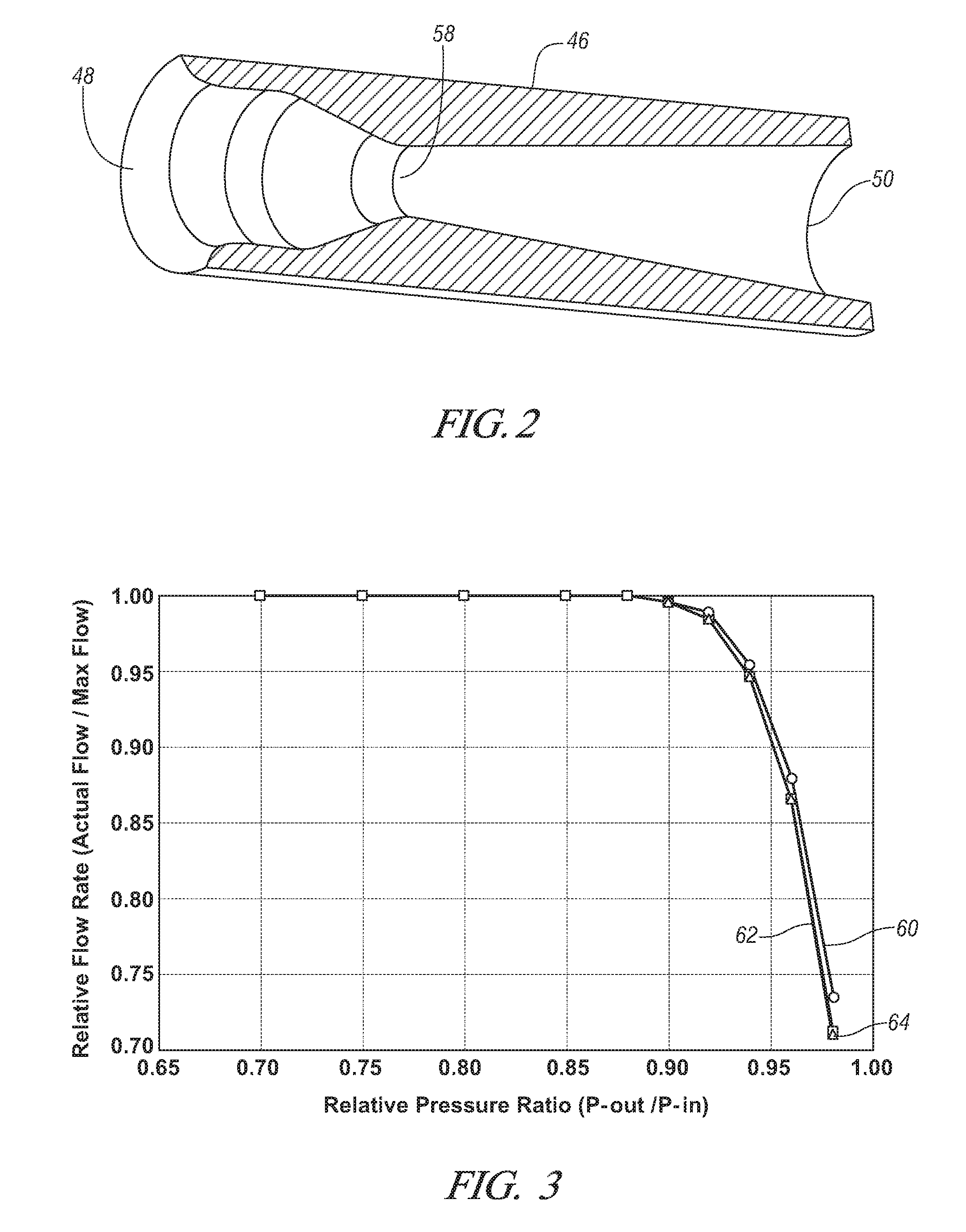Engine PCV system with venturi nozzle for flow regulation
a technology of flow regulation and nozzle, which is applied in the direction of combustion engines, charge feed systems, non-fuel substance addition to fuel, etc., can solve the problems of generating noise at certain points of instability, reducing the efficiency of pcv systems, so as to achieve low cost and simple design
- Summary
- Abstract
- Description
- Claims
- Application Information
AI Technical Summary
Benefits of technology
Problems solved by technology
Method used
Image
Examples
Embodiment Construction
[0011]Referring now to the drawings in detail, numeral 10 generally indicates an internal combustion engine in accordance with the present invention. The internal combustion engine 10 generally includes a crankcase 12 and at least one cylinder 14. A piston 16 is reciprocable in each cylinder 14 and defines a variable volume combustion chamber 18 therein. A filtered cylinder air intake system 20 is in fluid communication with each combustion chamber 18. The cylinder air intake system 20 generally extends from the fresh air inlet 22 to the cylinder intake valves 24 located in the cylinder intake ports 26. The cylinder air intake system 20 may include one or more of an air filter 28, a supercharger assembly (not shown), and an air intake manifold 30. A throttle 32 is also disposed in the cylinder air intake system 20 for controlling cylinder intake airflow to the associated cylinders 14. The cylinder air intake system 20 may alternatively be referred to as an air induction system.
[0012...
PUM
 Login to View More
Login to View More Abstract
Description
Claims
Application Information
 Login to View More
Login to View More - R&D
- Intellectual Property
- Life Sciences
- Materials
- Tech Scout
- Unparalleled Data Quality
- Higher Quality Content
- 60% Fewer Hallucinations
Browse by: Latest US Patents, China's latest patents, Technical Efficacy Thesaurus, Application Domain, Technology Topic, Popular Technical Reports.
© 2025 PatSnap. All rights reserved.Legal|Privacy policy|Modern Slavery Act Transparency Statement|Sitemap|About US| Contact US: help@patsnap.com



